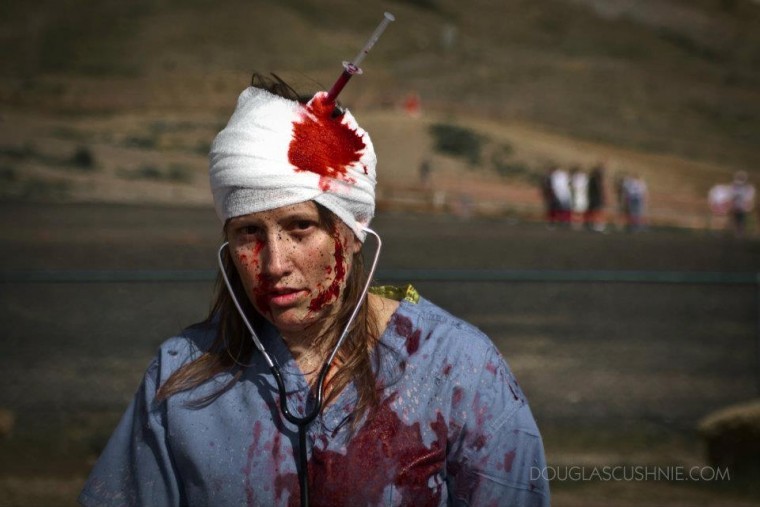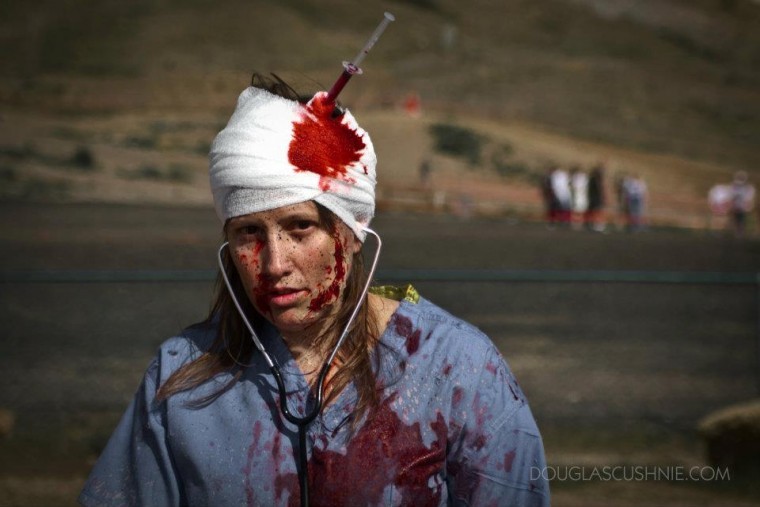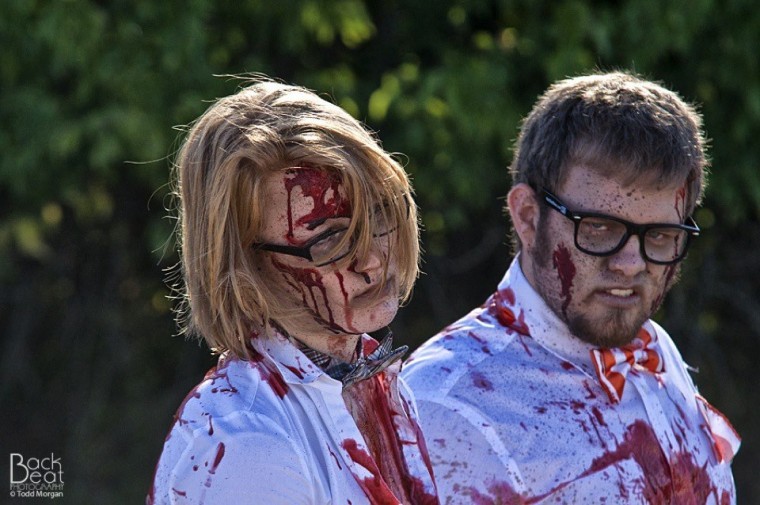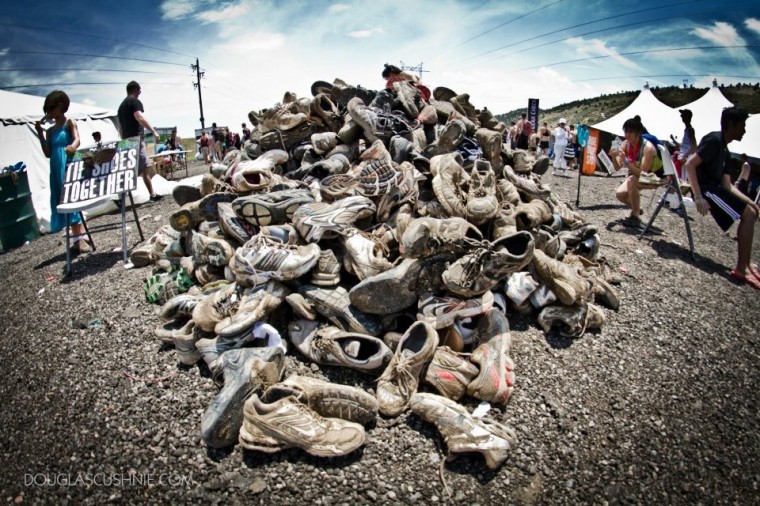Some people get into the Halloween spirit by picking pumpkins or taking a hayride. Others choose to watch horror films or decorate their houses in fall colors. There are also those who want to be chased by zombies. Finally, there are the ones who actually want to be the brain-hungry, virus infested undead.
Zombie 5K races have taken off since Run for Your Lives, the first official Zombie 5K adventure race, debuted last year. Run for Your Lives is not just a chance to flee from the zombie horde; participants are also challenged with a host of thrilling obstacles. These include mazes, mudslides, tunnels and swinging on a rope over pits of fake blood. In order to survive infection and cross the finish line ‘alive,’ all runners must participate in the obstacles and retain at least one of their three health flags (worn flag-football style).
There are two types of zombies: Chaser and Stumbler (limited to their respective ‘infected zones’ and either running or stumbling/walking/crawling). Believe it or not, the afterlife can be pretty good for a zombie (it only costs $35). You get a professional 20-minute gruesome zombie make-over, a kickoff ‘yay, we’re the walking dead’ party and some zombie swag.
The co-founder for Run for Your Lives, senior business major Ryan Hogan spoke at the Dingman Center for Entrepreneurship’s networking event of the year Wednesday. Run for Your Lives started when Hogan and his co-founder Derrick Smith needed to move some overstocked sports merchandise so they decided to host the Zombie 5K adventure race in Darlington, Md. Nearly 12,000 people showed up to the event, and Run for Your Lives spread across the U.S. like a flesh-eating virus. Ryan’s company — Reed Street Productions — is now planning to host a total of 23 races in 17 states by the end of 2013. Ryan won $17,500 and first place in this university’s 2012 Cupid’s Cup Business Competition, much of which was spent on shots at a bar for the company’s employees.
Working for Reed Street Productions sounds like a scream. Paintball outings, company ping pong tables and other office bonding activities abound. This penchant for fun must mean good things for the Zombie Run’s after-race parties, which include live music, games, food and celebrity appearances. The next Run for your Lives race is in Darlington on Oct. 27 (100 percent full) and Oct. 28 (65 percent full as of Sunday night).
A Zombie 5K race option that is closer to home — on the College Park campus and around Lake Artemesia — and for a good cause is the Habitat for Humanity 5K race on October 27 at 1 p.m. It’s also significantly cheaper — $12 for preregistration, $15 the day of. All money goes toward building decent affordable housing for underprivileged families in the Sandtown neighborhood of Baltimore. Although the race won’t have an obstacle course, you still have the option of signing up to be a brain-eating zombie or a live human being (health flags included). Catherine Birney, one of the race’s organizers, said there are specially designed zombie shirts available for the first 100 registrants and face paint provided for zombifying.
Lindsey Petrelle, one of the many who have already signed up to be a zombie, seemed enthusiastic about her impending transformation into the dead. Her eyes became a bit brighter and her smile a bit wider when the prospect of increasing the number of ‘prey’ was mentioned.
Running from zombies/being a zombie suddenly seems like a more plausible method for getting into the Halloween spirit. On the Run for Your Lives website, a frequently asked question wonders how to train for the 5K zombie race. Answer: “Run. Watch zombie movies. Run some more.”
Jessica Rae Walters shows off her zombie attire at a Colorado Race for Your Lives.
Human Abby Prater dressed up as a teenage mutant turtle for her 5k, which involves obstacles such as walls and mudslides
Zombies Matt Andrews and Katie Ruckman took a hipster twist on their costumes for the Run for Your Lives 5K. Zombies can take away “health flags” in order to infect the humans.
After the race, runners leave their shoes in a pile to be donated to charity.







